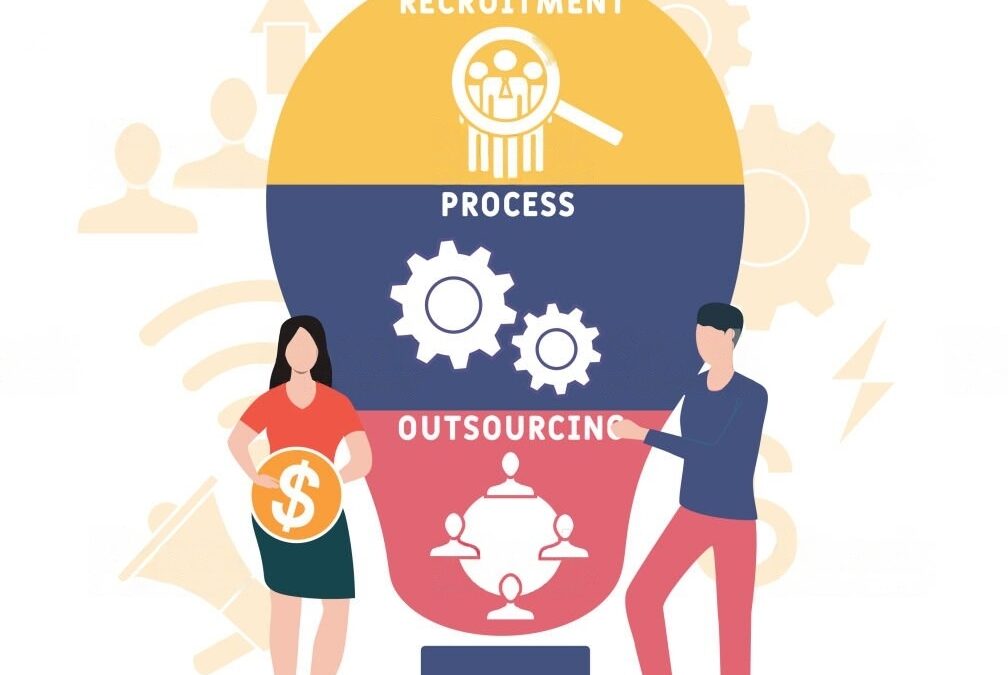
15 Fresh and Creative Recruitment Ideas For 2023
Introduction to Creative Recruitment Ideas
In the fast-paced world of business, finding and attracting top talent is crucial for success. As the job market becomes increasingly competitive, companies need to think outside the box and adopt innovative recruitment strategies. In this article, we will explore 15 fresh and creative recruitment ideas that can help organizations stand out from the crowd and attract the best candidates.
The Importance of Innovative Recruitment Strategies
Traditional recruitment methods are no longer enough to attract the attention of top talent. In order to stay ahead of the curve, companies must embrace creativity and innovation in their recruitment efforts. Innovative recruitment strategies not only help companies differentiate themselves from their competitors but also attract candidates who are looking for unique and exciting opportunities.
One of the key benefits of innovative recruitment strategies is that they can help companies tap into a wider pool of talent. By thinking outside the box and exploring new avenues, companies can reach candidates who may not have considered them potential employers otherwise. This can lead to a more diverse and inclusive workforce, which has been proven to drive innovation and productivity.
Creative Job Postings and Advertisements
The first step in attracting top talent is to create compelling job postings and advertisements. Traditional job descriptions can be dry and uninspiring, making it difficult for candidates to get excited about the opportunity. Instead, companies should focus on creating engaging and creative job postings that highlight the unique aspects of the role and the company.
One way to do this is by using storytelling techniques in job postings. By weaving a narrative around the role and the company, companies can pique the interest of candidates and make them more likely to apply. Additionally, companies can leverage multimedia elements such as videos and infographics to make their job postings more visually appealing and interactive.
Another creative recruitment idea is to use social media platforms to promote job opportunities. Platforms like Instagram and LinkedIn offer unique opportunities to showcase company culture and attract candidates who align with the organization’s values. Companies can use these platforms to share employee testimonials, behind-the-scenes footage, and other engaging content that gives potential candidates a glimpse into what it’s like to work at the company.
Unique Interview Techniques and Processes
Once candidates have applied, it’s important to have a unique and engaging interview process that sets the company apart. Traditional interviews can be intimidating and often fail to provide a true representation of a candidate’s skills and potential. Instead, companies should consider incorporating innovative interview techniques that allow candidates to showcase their abilities in a more interactive and practical way.
One creative interview technique is the use of role-playing scenarios. By putting candidates in simulated real-life situations, companies can assess their problem-solving skills, ability to think on their feet, and how they handle pressure. This can provide valuable insights into a candidate’s suitability for the role and the company culture.
Another innovative approach to interviews is the use of gamification. Companies can create interactive games or challenges that test candidates’ skills and knowledge related to the role. This not only makes the interview process more enjoyable for candidates but also allows companies to assess their abilities in a more engaging and objective manner.
Leveraging Social Media for Recruitment
Social media has become a powerful tool for recruitment. Companies can leverage platforms like LinkedIn, Twitter, and Facebook to not only promote job opportunities but also actively engage with potential candidates. By building a strong presence on social media, companies can attract passive candidates who may not be actively searching for a new job but are open to new opportunities.
One creative recruitment idea is to host live Q&A sessions on social media platforms. This allows candidates to ask questions about the company, the role, and the recruitment process in real-time. It also provides an opportunity for companies to showcase their company culture and values, which can be a deciding factor for many candidates.
Another innovative use of social media for recruitment is the creation of online communities or groups. Companies can create dedicated groups where potential candidates can interact with current employees, ask questions, and get a feel for the company culture. This not only helps candidates make more informed decisions but also allows companies to build relationships with potential candidates before they even apply.
Gamification in the Hiring Process
A gamification is a powerful tool that can make the hiring process more engaging and interactive. By incorporating game elements into the recruitment process, companies can create a more immersive experience for candidates and assess their skills in a fun and objective manner.
One creative recruitment idea is to create online challenges or puzzles that candidates must solve to move forward in the hiring process. This not only tests their problem-solving abilities but also showcases their ability to work under pressure and think creatively. Companies can also use gamification to assess candidates’ soft skills, such as teamwork and communication, by creating collaborative games or simulations.
Additionally, companies can organize recruitment events that incorporate gamification elements. These events can include team-based challenges, escape rooms, or even virtual reality experiences. By making the recruitment process more interactive and enjoyable, companies can attract top talent and leave a lasting impression.
Employee Referral Programs and Incentives
Employees are often the best advocates for a company. By implementing employee referral programs and incentives, companies can tap into their existing talent pool and leverage their networks to find qualified candidates. Not only does this save time and resources in the recruitment process, but it also ensures that candidates are more likely to be a good fit for the company culture.
One creative recruitment idea is to offer unique incentives for employee referrals. Instead of the traditional cash reward, companies can offer experiences or opportunities that align with their employees’ interests. For example, a tech company could offer a trip to a tech conference or a chance to work on a special project as a reward for successful referrals.
Additionally, companies can create a sense of competition and engagement by implementing gamification elements in their employee referral programs. By tracking and rewarding employees for their referrals, companies can create a culture of networking and collaboration that benefits both the employees and the organization.
Hosting Creative Recruitment Events
Recruitment events are a great way to attract top talent and showcase company culture. Instead of traditional career fairs or networking events, companies can host creative recruitment events that provide a unique and memorable experience for attendees.
One creative recruitment idea is to organize hackathons or coding challenges. This not only allows companies to assess candidates’ technical skills in a practical setting but also provides an opportunity to showcase their commitment to innovation and problem-solving. Companies can partner with universities or coding boot camps to attract top talent and create a buzz around the event.
Another innovative approach to recruitment events is to organize industry-specific workshops or seminars. By providing valuable insights and knowledge to attendees, companies can position themselves as thought leaders and attract candidates who are passionate about the industry. These events can also serve as networking opportunities, allowing companies to build relationships with potential candidates and industry professionals.
Collaborating with Influencers and Thought Leaders
Influencer marketing is not just limited to consumer brands. Companies can leverage the power of influencers and thought leaders in their recruitment efforts to reach a wider audience and attract top talent.
One creative recruitment idea is to partner with industry influencers to create engaging and informative content about the company and its culture. This can include blog posts, videos, or even live events where influencers share their experiences and insights about the company. By leveraging the influencer’s credibility and reach, companies can attract candidates who align with their values and vision.
Additionally, companies can invite thought leaders to speak at recruitment events or webinars. This not only provides valuable insights to attendees but also positions the company as a leader in the industry. Thought leaders can share their experiences, industry trends, and career advice, which can be a valuable resource for potential candidates.
Utilizing Technology for Innovative Recruitment
Technology has revolutionized the recruitment process, making it more efficient and effective. By embracing innovative technologies, companies can streamline their recruitment efforts and attract top talent.
One creative recruitment idea is to use AI-powered chatbots to interact with candidates and answer their questions in real-time. This not only provides a personalized experience for candidates but also saves time and resources for the recruitment team. Chatbots can be integrated into company websites or social media platforms, allowing candidates to get instant responses and assistance throughout the recruitment process.
Another innovative use of technology is the use of virtual reality (VR) for recruitment. Companies can create virtual experiences that allow candidates to get a glimpse into the company culture and work environment. This can be particularly useful for candidates who are located in different cities or countries and cannot physically visit the company’s office.
Building a Strong Employer Brand
In today’s competitive job market, having a strong employer brand is essential for attracting top talent. Companies with a positive reputation and strong brand presence are more likely to attract candidates who are seeking a fulfilling and rewarding career.
One creative recruitment idea is to showcase employee testimonials and success stories on the company website and social media platforms. This allows potential candidates to hear directly from current employees about their experiences with the company. By highlighting the achievements and growth opportunities within the company, companies can attract candidates who are looking for long-term career prospects.
Additionally, companies can leverage their existing employees as brand ambassadors. By encouraging employees to share their experiences and insights on social media, companies can amplify their brand message and attract potential candidates. This not only creates a sense of authenticity but also showcases the company’s commitment to employee satisfaction and development.
Employee Testimonials and Success Stories
Employee testimonials and success stories are a powerful tool for attracting top talent. By sharing the experiences and achievements of current employees, companies can provide a real-life insight into what it’s like to work at the organization.
One creative recruitment idea is to create video testimonials where employees share their journey and growth within the company. These videos can be shared on the company website, social media platforms, and even during recruitment events. By showcasing the diverse experiences and career paths within the company, companies can attract candidates who are looking for opportunities for growth and development.
Additionally, companies can create a dedicated section on their website where employees can share their success stories and achievements. This not only provides valuable insights to potential candidates but also creates a sense of community and pride among current employees.
Incorporating Diversity and Inclusion in Recruitment
Diversity and inclusion are not just buzzwords – they are essential for creating a thriving and innovative workforce. Companies that prioritize diversity and inclusion in their recruitment efforts are more likely to attract top talent and drive innovation.
One creative recruitment idea is to create diversity-focused recruitment campaigns. Companies can highlight their commitment to diversity and inclusion by showcasing diverse employees in their job postings and advertisements. Additionally, companies can partner with organizations that promote diversity and inclusion to attract a wider pool of candidates.
Another innovative approach to diversity and inclusion in recruitment is the use of blind hiring techniques. By removing identifying information from resumes and focusing solely on skills and qualifications, companies can ensure a fair and unbiased recruitment process. This not only promotes diversity but also allows companies to assess candidates solely based on their abilities and potential.
Continuous Learning and Development Opportunities
Top talent is not just looking for a job – they are looking for opportunities for growth and development. Companies that prioritize continuous learning and development are more likely to attract and retain top performers.
One creative recruitment idea is to highlight the learning and development opportunities within the company. This can include access to online courses, mentorship programs, or even dedicated learning budgets. By showcasing the company’s commitment to employee growth, companies can attract candidates who are looking for long-term career prospects.
Additionally, companies can create a culture of continuous learning by organizing lunch-and-learn sessions, workshops, or even conferences. This not only provides valuable knowledge and insights to employees but also creates a sense of community and collaboration.
Tracking and Measuring the Success of Creative Recruitment Ideas
In order to make informed decisions and improve recruitment efforts, companies need to track and measure the success of their creative recruitment ideas. By analyzing data and metrics, companies can identify what works and what doesn’t, and make adjustments accordingly.
One creative recruitment idea is to use analytics tools to track the performance of job postings and advertisements. Companies can analyze metrics such as click-through rates, time spent on the job posting, and conversion rates to gain insights into the effectiveness of their recruitment efforts. This allows companies to optimize their job postings and advertisements to attract more qualified candidates.
Additionally, companies can collect feedback from candidates and employees to assess the effectiveness of their recruitment process. This can be done through surveys, interviews, or even focus groups. By listening to the experiences and insights of candidates and employees, companies can identify areas for improvement and make data-driven decisions.
Conclusion
In today’s competitive job market, companies need to embrace creativity and innovation in their recruitment efforts. By adopting fresh and creative recruitment ideas, companies can attract top talent, differentiate themselves from their competitors, and build a strong employer brand. From creative job postings and unique interview techniques to leveraging social media and gamification, there are countless ways for companies to stand out and attract the best candidates. By continuously tracking and measuring the success of these recruitment ideas, companies can make informed decisions and improve their recruitment efforts for the future. So, embrace creativity and think outside the box – the future of recruitment is here!



